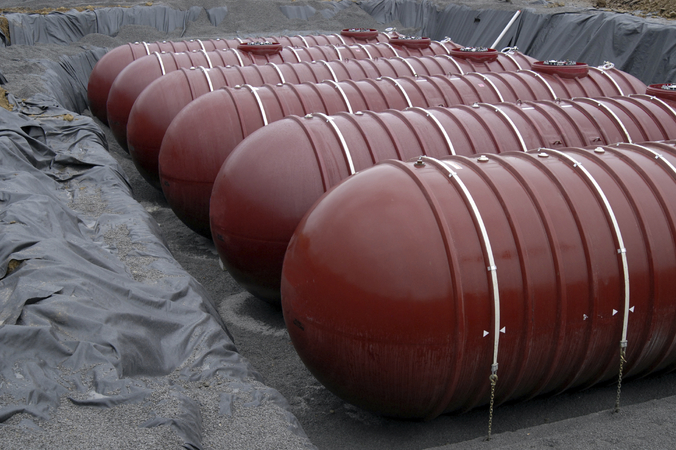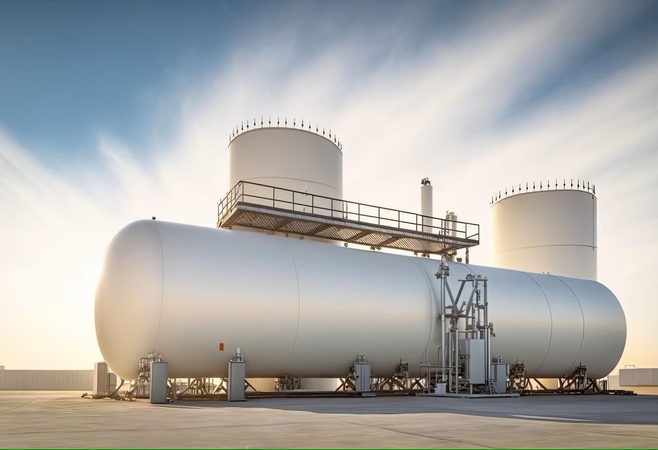
MEFAB is known as one of the best storage tank manufacturers in UAE, specializing in underground storage tanks (USTs) and fabricated storage tanks. The company’s modern infrastructure facility comprises tech manufacturing units, quality testing centers, packaging, marketing, and sales departments. Our company constantly upgrades the manufacturing plants so that our products, including underground storage tanks, are made based on modern methodology.
Underground storage tanks (USTs) play a critical role in storing various substances such as petroleum, chemicals, and hazardous materials. While they are essential for many industries, USTs can pose significant environmental risks if not properly managed. In this blog, we will explore the common environmental problems associated with underground storage tanks and the importance of proactive measures to prevent contamination and protect our ecosystems.
The environmental problems associated with underground storage tanks require proactive measures, regulatory compliance, and ongoing maintenance to prevent contamination and protect ecosystems. By addressing issues such as leakage, soil and groundwater pollution, vapor intrusion, and aging infrastructure, we can ensure the safe and sustainable use of storage tanks while minimizing environmental risks. Continued efforts and investments in improving storage technologies and promoting responsible practices are vital for a cleaner and greener future.
1. Leakage and Contamination:
One of the primary concerns with USTs is the potential for leaks and subsequent contamination of soil and groundwater. Over time, corrosion, faulty equipment, or poor installation can lead to cracks or breaches in the tank walls, allowing substances to escape into the surrounding environment. This leakage can contaminate soil, seep into nearby water sources, and pose a threat to human health and aquatic ecosystems. Proper maintenance, regular inspections, and the use of advanced leak detection systems are crucial to preventing and addressing leaks promptly.
2. Soil and Groundwater Pollution:
When USTs leak, the stored substances can seep into the soil, causing contamination. Petroleum products, for example, contain harmful chemicals such as benzene, toluene, and xylene, which can persist in the environment and cause long-term damage. The contaminated soil can affect vegetation growth and disrupt the natural balance of ecosystems. Moreover, the leaked substances can migrate through the soil and reach the groundwater, which serves as a vital source of drinking water for many communities. Once groundwater is contaminated, it becomes costly and challenging to clean up. Regular monitoring of USTs, proper installation, and adherence to regulations are vital to minimizing soil and groundwater pollution.
3. Vapor Intrusion:
Apart from direct leakage into the environment, USTs can also contribute to vapor intrusion issues. Vapor intrusion occurs when volatile chemicals from underground storage tanks vaporize and migrate upward, entering buildings or homes through cracks in foundations or utility lines. This can pose serious health risks to occupants, leading to respiratory problems and other ailments. Preventive measures such as proper venting, installing vapor barriers, and conducting indoor air quality assessments can help mitigate vapor intrusion concerns.
4. Aging Infrastructure and Compliance Challenges:
Many USTs in use today were installed several decades ago, and their infrastructure may be deteriorating. Aging tanks are more susceptible to leaks and corrosion, increasing the likelihood of environmental contamination. Compliance with regulatory requirements can also be challenging for businesses, as regulations and best practices are constantly evolving. Regular inspections, maintenance, and upgrading aging infrastructure are essential to ensure USTs remain safe and compliant with environmental regulations.
5. Remediation and Cleanup Costs:
Addressing environmental problems resulting from UST contamination can be financially burdensome. Cleanup and remediation efforts often involve excavating contaminated soil, pumping and treating contaminated groundwater, and implementing long-term monitoring systems. These costs can significantly impact businesses and may lead to legal liabilities if not addressed promptly and effectively. By investing in proper UST maintenance, monitoring, and early leak detection systems, businesses can minimize the potential for contamination and mitigate the financial burden associated with cleanup efforts.
Underground storage tanks are essential for many industries, but their improper management can lead to severe environmental problems. By understanding the common issues associated with USTs and implementing proactive measures, such as regular inspections, maintenance, and adherence to regulations, we can protect our environment and ensure the sustainability of our ecosystems for future generations.
Why you should choose MEFAB for the best storage tanks?
MEFAB is known as one of the best storage tank manufacturers in UAE, the reason being that the company’s modern infrastructure facility comprises tech manufacturing units, quality testing centers, packaging, marketing, and sales departments. Our company constantly upgrades the manufacturing plants so that our products are made based on modern methodology. All the Duplex steel products are constantly under inspection, ensuring maximum efficiency at the user’s end. Being one of the best-fabricated storage tanks in UAE, all our departments are segregated and handled by experts. We are also facilitated with a fully equipped warehouse facility as well, for safe storage of the products manufactured.
Mefab’s tanks are engineered with precision and adhere to rigorous industry standards and regulations. They undergo meticulous testing and quality control measures throughout the manufacturing process to ensure optimal performance and compliance with safety requirements. Additionally, Mefab provides customization options to tailor the tanks to specific project requirements, ensuring a perfect fit and maximizing storage capacity.

